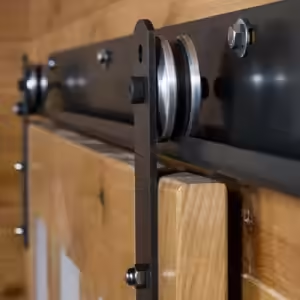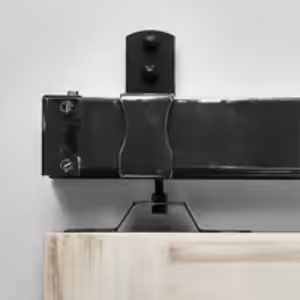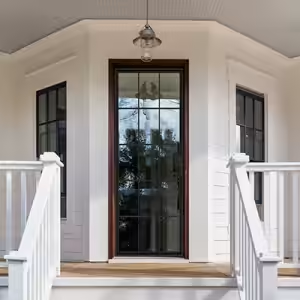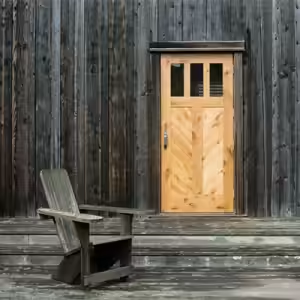Do you ever feel like you have an abundance of clothes but nothing to wear? You’re not alone. For many people, closet organization doesn’t come naturally. But putting your clothing in order can be a rewarding experience. Just follow these 7 tips to learn how to organize your closet.
7 Tips on How to Organize Your Closet
- Gather Your Closet Organization Supplies
- Take Everything Out of Your Closet
- Clean and Measure Your Closet
- Acquire Any Closet Organizers You Need
- Declutter Your Clothing, Shoes, and Accessories
- Organize Your Closet
- Maintain Your Closet Organization
Why is it important to know how to organize your closet? Many people have far too many clothes and accessories—and this can cause decision fatigue. When you’re overwhelmed with too many choices, you can find it hard to make decisions about what to wear every day. Streamlining your wardrobe can make decision-making easier and make the start of each day better.
One of the first things you may ask when learning how to organize your closet is, “What do I need in my wardrobe?” Keep in mind that there is no “right” number of clothing items to have. Some people are attracted to minimalism and prefer fewer items in their closet. But others like to have more options and to explore a range of styles.
Wherever you fall on the closet spectrum, your goal should be right-sizing. You want to have just enough clothes to meet your needs and make you happy. Learning how to organize your closet isn’t an exercise in austerity, but a path to contentment.
Step 1: Gather Your Closet Organization Supplies
When you learn how to organize your closet, you’ll find out preparation is essential for success. You need to do a little advance work before you organize your clothes. First, know that you will be getting rid of some items—and you need options for what to do with them. Chances are, you’ll want to donate or consign some items. But you may need to toss some things in the trash.You’ll need sturdy bags or boxes to manage the items you’re eliminating from your wardrobe. Also, you may need bags or boxes to transport items to the dry cleaner or tailor.
Also, have a tape measure on hand. You’ll want to measure hanging space and shelves, especially if you wish to purchase any closet organization systems or storage containers. Don’t forget to have a pencil and paper handy to write down measurements.
Be sure you have access to a full-length mirror. Use the mirror to check out items to see if they fit and flatter you—or to consider how they work in a certain outfit.
If you have high shelving, a step stool may be in order. You’ll need to be able to reach into every corner of your closet to declutter and organize effectively. And have some cleaning supplies around so you can clean your closet and make it ready for your new organization approach.
Good quality hangers are a wise idea. Ideally, you should get rid of any flimsy metal or plastic hangers and upgrade your hangers. Choose solid wooden hangers if you have a lot of heavy items, like suits or blazers. You may want to consider velvet hangers if you have a lot of delicate fabrics. Have these supplies ready to go before you start re-organizing your closet.
Finally, have a catch-all basket or box readily available for odds and ends. As you empty your closet, you may find stray coins or receipts in pockets. You’ll need a space to collect these so that you can attend to them without pausing your closet organization efforts.
Step 2: Take Everything Out of Your Closet
The next step in how to organize your closet is to empty your closet completely. Yes, you’re going to take everything out of your closet! If you’ve been ignoring closet organization for a while, this can feel like an overwhelming task. But it’s helpful to have a blank slate when reorganizing your closet.Before removing everything, you’ll likely want to clear off your bed or another large space to house all your clothes. Take out every piece of clothing, along with any shoes, hats, accessories, jewelry, and anything else you’ve stashed away. At this stage, don’t analyze whether you want to keep or downsize anything. Just keep at it until your closet is bare.
Step 3: Clean and Measure Your Closet
Take a moment to look at your now-empty closet and imagine it’s potential. You should also take a few minutes to clean and refresh it. Dust your shelving, wipe down clothing racks, and sweep or vacuum your floor. Scrub any built-ins that may be collecting dirt.Next, measure your closet. Measure from the floor to any closet racks, measure the length and height of shelves. This step will help you assess what storage space you have and what you may need for better closet organization. At this point, you can consider whether you need any closet organization systems.
Step 4: Acquire Any Closet Organizers You Need
Your closet is a clean slate. What are you going to do with it?The next step in learning how to organize your closet is clarifying what storage solutions you may need. You can purchase expensive closet solutions—but that’s not always necessary. Consider creating a DIY closet system from items you already have. An underutilized bookshelf can be a great place to store sweaters or shoes. Baskets or bins can house accessories.
Also, you may want a few store-bought organization solutions to fill in any gaps. A rack on your closet door can be perfect for hanging coats or sweatshirts—and typically cost very little. Another inexpensive item to consider is a double hang closet rod, which can offer you more hanging space for shirts, pants, and skirts. Shoe shelves could be other worthwhile closet accessories to consider. If you put your creativity to work, you can brainstorm plenty of easy, free or low-cost closet organizer ideas.
Step 5: Declutter Your Clothes, Shoes, and Accessories
It’s time to right-size your clothing and accessories. You may love this step in the process of learning how to organize your closet. But you could find it frustrating or stressful. If you find decluttering less appealing, remember how refreshed you’ll feel with an organized closet. Also, keep in mind that closets are finite spaces. Overstuffing them can lead to chaos, disorder, and daily bouts of decision fatigue.Many people find success when they sort items into piles. The first pile is your “keep” pile and includes the items you’re certain you don’t want to give away. Also, you’ll need a discard pile for any rejects. You may find it helpful to have a box or two available for items you want to donate or consign, along with a trash bag for items that must be thrown out.
It's inevitable that you’ll have a “pile.” In this pile, place any item you aren’t quite sure about for more consideration. If you can’t make a quick keep or discard decision, just put that item in the maybe pile and move on. It’s often easier to go through everything once quickly, then spend more time with your “maybe” items.
How can you decide what to do with items in your “maybe” pile? Take the time to look them over and try them on. We’ve also compiled a handy list of questions for reflection a bit further down in this article.
If you’re truly stuck or unsure, you can give yourself more time. Some closet organizer professionals recommend boxing up items that you’re not sure about and placing them in storage for a designated time. You likely don’t want to store them more than six months or one year—but keep them at least through one season when you are more likely to wear them. If you don’t pull them out and include them in your wardrobe rotation, it’s probably safe to let them go.
You can include maybe items in your closet and track whether you wear them. Try this expert closet organizing tip: Face all your hangers in the same direction to start. Reverse the direction for any item you’ve worn. After some time passes, you’ll know you aren’t wearing any items on hangers that you haven’t reversed. That’s a good sign that you can eliminate them from your wardrobe.
Step 6: Organize Your Closet
Once you have whittled your wardrobe down to the items you want to keep, you can put them back into your closet. But be deliberate about how you organize them. Place similar items together. Group all your work shirts in one space, put sweaters in another, and pants in another.Also, consider putting the most important items in the center of your closet, but tuck away lesser-used items. That means work or everyday wear will be easily accessible, while formal wear or other items your less likely to wear won’t take up prime real estate in your closet.
Another closet organization pro tip to try: Hang longer items, like dresses or coats on the left of your closet. Place shorter items like shirts or blazers on the right. This approach creates an upward sloping line and enhances visual appeal.
Use the same style of hanger if possible. If all your hangers are the same, this creates a streamlined look. Instead of looking jumbled and chaotic, your closet can feel like an oasis of calm and organization.
Step 7: Maintain Your Closet Organization
Professional organizers know that a shift in mindset is essential for keeping your closet space clean and free of clutter. Don’t think of closet organizing as a big “one and done” task. Instead, create a routine to keep your closet organized.Each month, you may want to do a mini-closet review and declutter. Consider whether you need to take out any “maybe” items that aren’t in use. Plan for a more comprehensive closet organization session at least twice a year—or at the start of each season.
If you ever find yourself searching for a needed clothing item, take note. That’s a good sign that it’s time to reorganize. Now that you know how to organize your closet, you can apply these tips and tricks any time your closet needs a refresh! You can also apply the organizing and storage ideas you’ve learned to other areas, like your linen closet.
Questions to Ask as You’re Organizing
Closet organization can be a lot of hard work. You may encounter some possessions that have sentimental value or that you received as gifts from others. Or you may find you have emotional attachments to items.It’s easy to get caught in the notion that you should keep something that you truly don’t need. And that can make your closet organization efforts less successful. Understanding how to let go of items without guilt is one of the hardest things to do when learning how to organize your closet.
What can you do to avoid this problem? Make a list of questions to review when you’re deciding whether to keep or give up an item. Questions like these can be helpful:
●Have I worn this item in the past six months or one year?
●Would I buy this again if I had the opportunity?
●Does this item still fit?
●Does this item align with my personal values, beliefs, or style?
●Is this item in good condition, or does it require cleaning or repair?
●Is this item dated?
●Do I own a similar piece?
●Is this garment comfortable?
●Does this item only offer me one or limited wear opportunities?
●Do I love this item?
●Does this look good on me?
●Does this item feel flattering?
●If this was a gift, does the gift giver know that I still have it?
●Does this item fit my current lifestyle?
●Am I keeping this item because I feel I “should” have it or because I want it?
●Does this item spark joy?
As you can see, this list covers a lot of territory—from practical considerations to more emotional ones. People hold on to items in their closets for many reasons. Some of them are valid, and some of them are not.
According to storage organization guru, Marie Kondo, the last question on our list, “Does this item spark joy?” can help clarify your feelings about an item. If you find yourself feeling tense or associating bad memories with any item, grant yourself permission to get rid of it. Maybe you feel regret over purchasing something you didn’t need or didn’t wear. Perhaps you wore an item only once—on a particularly sad or hard day. Clinging to things that evoke difficult feelings can mean holding on to hard situations. Let the item go and lighten your emotional load.
Also, asking yourself thoughtful questions can help you cut through mental clutter and look at the clothes you own more objectively. For example, if you previously worked in a formal business environment, you may own several suits. If you’ve transitioned to a workplace with business casual attire, you can likely scale back your suit collection. Your current lifestyle doesn’t require you to own several suits, but you may need a few. Then you can look at the ones in your collection through a more critical lens.
You can ask yourself specific questions about your suits. Are some less stylish? Are certain colors unflattering? Do some offer fewer mix and match opportunities?
Once you’ve identified a need for fewer suits, you can ask questions to make informed decisions about which ones you can keep. This way, you can feel good about your downsizing choices and feel happy with your streamlined wardrobe.
Barn Doors for Your Closet
Most people think of their closet as a functional space, not a beautiful one. That could be why many people overlook the necessity of closet organization.But imagine how it would feel to have your closet be both beautiful and functional. And envision if your closet was more than just bedroom storage—but an eye-catching focal point in your room.
If you want to upgrade the look and appeal of your closet, you can add attractive barn doors to your closet. In many bedroom layouts, closets are opposite a bed’s headboard. If you have this setup, your closet is the first and last thing you see every day. When your closet is appealing from the outside, you’ll be more likely to want to keep it clean and organized on the inside.
You can choose from several styles of barn doors to suit your needs. The most popular style is bi-parting barn doors that open from the middle. Alternatively, you can choose bypassing barn doors. With this style, one door slides over the other to open. Another option is ceiling mount barn doors that can cover up unattractive cover spots and fit into tight spaces.
If you want your barn door to disappear fully when it’s open, choose pocket doors. This style is a great choice if you need a single door and don’t have room for a swinging door.
Whatever you prefer, the right barn door hardware will enhance the look of your closet. Attractive latches, tracks, handles, and mounts can add a rustic touch to any closet system.
Look at your current closet from the outside and envision how beautiful it could be. Brainstorm barn door closet ideas and research the possibilities. You can have a showcase closet on the outside and an impeccably organized closet on the inside.
How to Organize Your Closet
You’ve decided to learn how to organize your closet. You know that a streamlined space can help you feel refreshed and positive about life. But if you feel overwhelmed by the task, don’t despair. Set aside at least two to three hours to do the work. If you have accumulated a lot, take more time. Once you’re over the difficult first clean out, set up a closet maintenance schedule to keep your closet clutter-free.As a first step, you’ll need to gather some supplies. You’ll want some boxes or bags for sorting clothes and a full-length mirror for viewing outfits. And you’ll need a measuring tape so that you can assess the space in your closet. Experts recommend taking everything out of your closet and cleaning it thoroughly before you reorganize.
The decluttering process can take time and stir up emotions. Carefully consider each garment and accessory to decide if you want to keep it. Also, you may need to shift your thinking about why you hold on to items. Yes, you can give away something that was a gift if it doesn’t suit your style. And it’s fine to get rid of things that you’ve only worn once, especially if they stir up hard feelings. If you don’t wear something often, you don’t need to hold on to it because you could wear it someday. Chances are, you won’t wear it later if you don’t wear it now.
You may find you need some closet storage solutions. Before purchasing anything new, consider what you can repurpose. Unused filing cabinets with drawers can be great options for storing out-of-season items. Can you reuse bookshelves for DIY closet shelves? Do you have small boxes or storage bags that can store tank tops, small purses, or scarves? Some creative DIY closet organization can help you save on costly closet systems.
With the money you save, you can refresh your closet exterior. Many design-savvy people love the look of barn doors for closets, along with the customization options that come with quality sliding door hardware. Every day, you can enjoy a breathtaking closet that may become a focal point of your bedroom.
When your closet looks good on the outside, you’ll feel more motivated to keep it tidy on the inside. Imagine all the benefits an organized closet can bring to your life. You won’t need to struggle with the daily what-to-wear dilemmas, and a streamlined wardrobe means less time doing laundry. Once you learn how to organize your closet, you can bring more joy and peace into your life.

 800-891-8312
800-891-8312




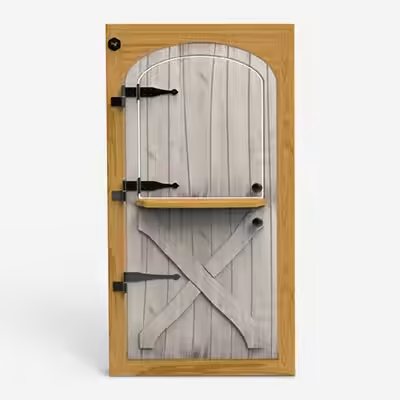

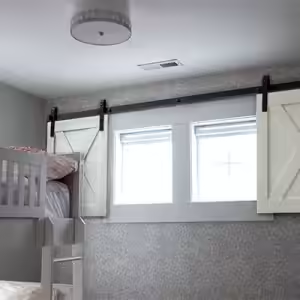


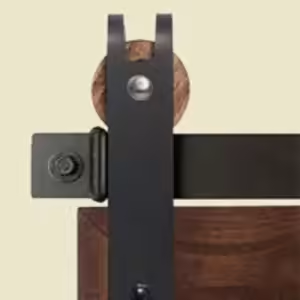

-1601395521090.avif)
